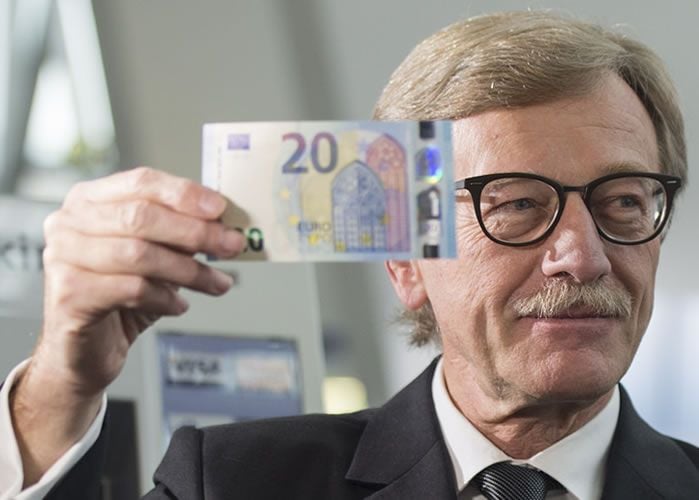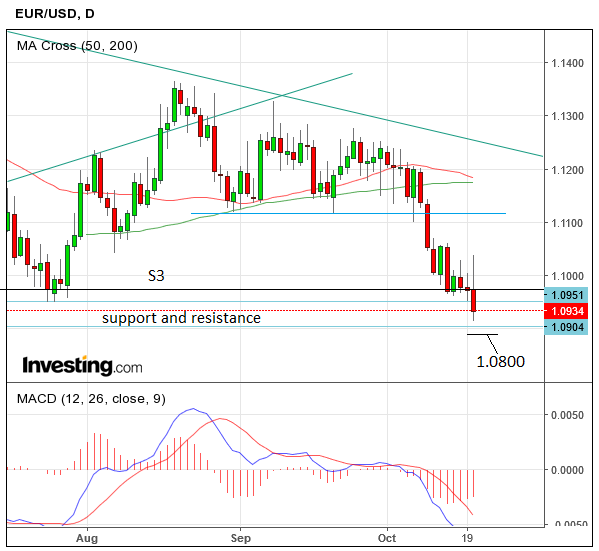EUR/USD Exchange Rate Outlook post-ECB: Targetting 1.08

The Euro has been under pressure against the US Dollar through October with the European Central Bank's October policy meeting providing the move lower with a fresh impetus.
The single currency is now 3% weaker than were it started the month against the Greenback.
Traders believe that what the ECB suggested was that the monetary easing programme might be extended or tweaked in December.
There were in fact no concrete messages, but the amiguity allowed traders to extend the recent downtrend in EUR/USD.
The pair pushed below the 1.0950 lows to reach 1.0916, which was just above a long-term support and resistance level.
EUR/USD is now expected to extend this short-term downtrend, and if it breaks below the 1.0870 level it will probably reach 1.0800 eventually.
"Technically EURUSD’s breakdown below important support at 1.0952/13 – the 61.8% retracement of the December 2015/May 2016 rise and the June/July 2016 price lows – has reinforced an existing top and our bearish view. We look for further downside to 1.0826/22 next, then the January 2016 low at 1.0711," say Credit Suisse in a recent strategy note to clients.
The ECB governing council said it would wait until its staff projections were produced in December to decide whether to extend the duration of the asset purchase programme (APP) programme, or tweak the criteria for bond purchasable under the programme.
This was in contrast to recent rumours that the bank might taper its QE programme, by steadily reducing the level of asset purchases it makes every month, a notion dismissed outright by Mario Draghi at the meeting today.
“In the press conference, there were a lot of questions regarding the QE program.
“In his answers, President Draghi avoided raising any unduly market expectations about both the parameters and the lifetime of the APP.
“The Governing Council is waiting for the December Eurosystem staff macroeconomic projections to decide both on parameters and the lifetime of the APP,” said SEB’s Thomas Kobel.
The euro is expected to fall slowly down to a low of 1.05, as a result of dollar gains, mainly, from expectations of higher US interest rates, and euro asset outflows.
Deutsche also point out that German Bund yields are also showing a likely fall in the euro.
The bund yield curve, which shows different maturities of bonds along the X axis against yield on the y-axis is showing a steepening curve, as longer-term bonds go up.
“Bear steepener is the widening of the yield curve caused by long-term rates increasing at a faster rate than short-term rates. This causes a larger spread between the two rates as the long-term rate moves further away from the short-term rate.”
Deutsche note that when this happens it is usually a reliable indicator that the euro is going to weaken.






